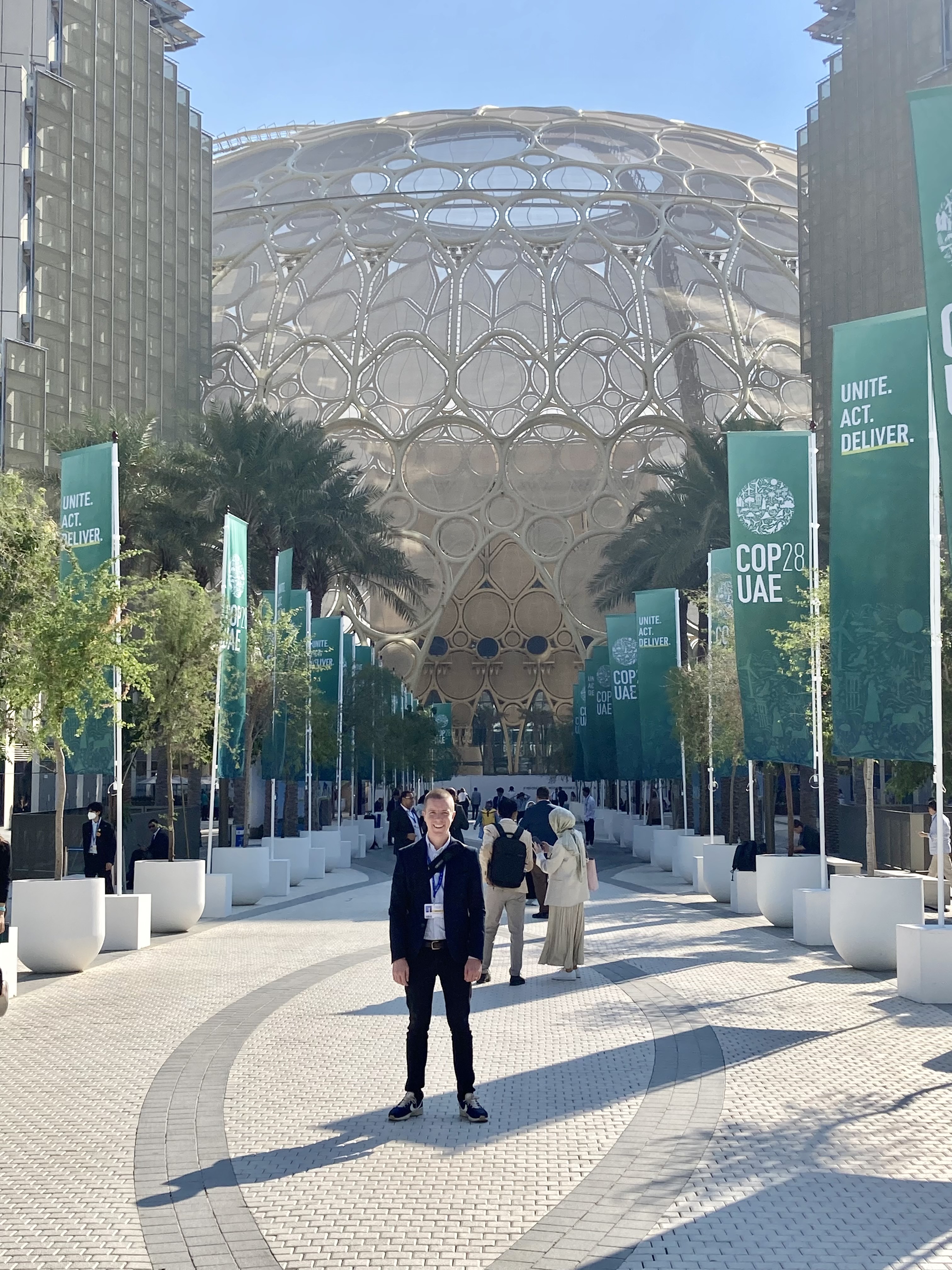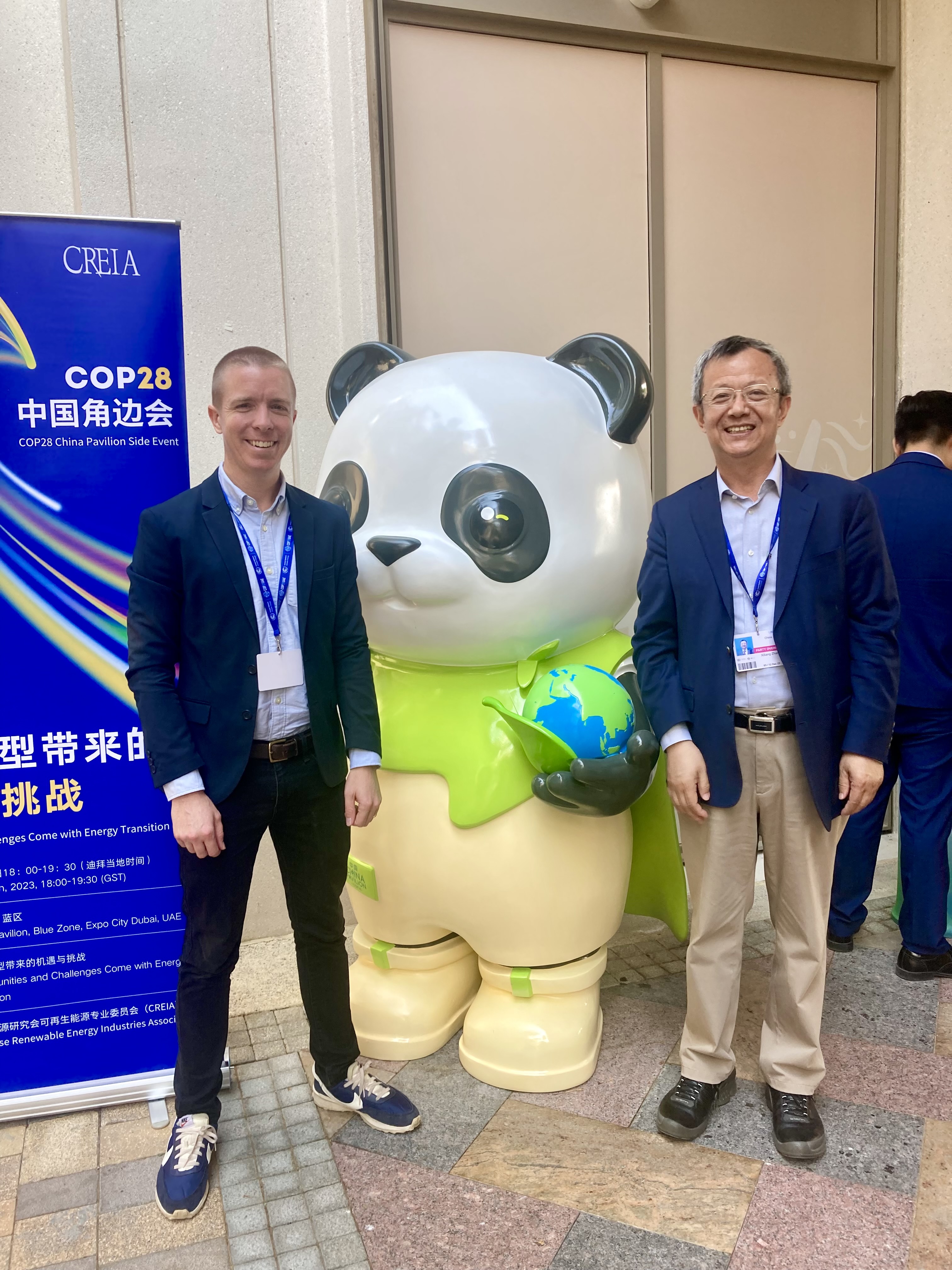Reflections from COP28
By Daniel Tkacik, Executive Director of the Wilton E. Scott Institute for Energy Innovation
NOTE: The comments and insights below reflect a moment in time at a set of proceedings, and do not necessarily represent the views of the Scott Institute.
Over the past two weeks, a record-breaking 70,000+ people convened in Dubai to attend the annual UN climate change conference from November 30 until December 12, 2023. Thousands of discussions, presentations and other events occurred alongside a two-week negotiation process that ended with nearly 200 nations committing to "transitioning away from fossil fuels in the energy system, in a just, orderly and equitable manner."
Let's back up: for those who are unfamiliar, the purpose of this annual conference is to convene parties of the United Nations Framework Convention on Climate Change -- also known as the Conference of Parties, or simply, COP -- to assess the world's progress in dealing with climate change. This year was the 28th COP; the first one (COP 1) was held in Berlin in 1995.
What most people talk about when they talk about COP -- including what most news journalists talk about when they talk about COP -- are the climate negotiations in which delegates from countries from all over the world negotiate a written agreement on how the world should be responding to climate change. This happens behind mostly closed doors unless you are a registrant with an official "observer" status, in which case you may sit in on the negotiations and in theory keep the negotiators accountable. (What most people don’t talk about when they talk about COP is everything else that is happening outside of that negotiating room, but more on that later…)
The outcome of this year's negotiations was historic. Not only have the words "fossil fuels" never appeared in a previous COP's final agreement text, there certainly has never been an agreement to "transition away from fossil fuels in the energy system..." Some critics say this language isn't enough to address the current state of climate change, but there's no denying that it is a departure from previous agreements.
Outside of the negotiations, thousands of discussions, presentations, and side-events were held ranging from giant plenary sessions with hundreds in attendance to small, informal group discussions over pita and tea. Some of the notable achievements at this year's COP that occurred outside the negotiations included:
- Twenty-two countries pledged to triple their nuclear capacity in efforts to curb climate change.
- Developed countries approved a draft plan to help poor, vulnerable countries pay for climate-related damages.
- Nearly 50 oil and gas companies pledged to dramatically reduce methane leaks to "near zero" by 2030, and pledged to end routing flaring of methane.
- The United States unveiled a new strategy to expand nuclear fusion energy.
And those were just some outcomes of some of the larger side-events, not encompassing the thousands of smaller gatherings, at which is where I spent most of my time at COP. A few of my high-level observations from those events include:
- There is lots of enthusiasm around nuclear fusion. I attended several panels and talks related to nuclear fusion, and to paraphrase one panelist at a discussion hosted by the Clean Air Task Force, achieving a sustainable energy source through nuclear fusion is inevitable. It’s not a matter of if, but when.
- University centers and institutes are eager to work together to drive the energy transition. I organized and moderated a panel discussion on what university energy institutes and centers should be doing differently in the context of a global clean energy transition with a very tight timeline. I argued that while Universities of course should be doing things like partnering with local municipalities and the private sector, fostering interdisciplinary research, and embracing entrepreneurship on campus, it's the institutes that are actually executing on those kinds of University commitments. Therefore, it's imperative that those University institutes are able to share what's working and what's not in terms of bringing these big picture goals to fruition. It was a fascinating and productive discussion, and at its conclusion every panelist agreed we needed more discussions like this to drive collaboration amongst the institutes. A transcript of that discussion will be available in the coming weeks.
- Pennsylvania universities had a strong presence at COP 28. I had great interactions with folks from the Environmental Collaboratory at Drexel University and the Kleinman Center for Energy Policy at the University of Pennsylvania. A special thanks to folks at the Kleinman Center for offering us space in the Higher Ed pavilion to hold the aforementioned panel discussion.
- Carbon dioxide isn’t the only carbon we should care about. I met with folks from the Center for Study of Science, Technology and Policy (CSTEP), a think tank headquartered in India, who are focusing a lot of their effort on studying the effects of black carbon (BC) on climate and human health. CSTEP released a policy brief at COP 28 that explained the power of BC emissions and argued that reducing them is not only critically important for climate mitigation and building resilience to climate change, but also would vastly improve public health.
- There are big opportunities for transcontinental collaboration. I met with folks from China’s Tsinghua University, including Professor Xiliang Zhang, Director of the Institute of Energy, Environment, and Economy, at Tsinghua University. They are planning workshops focused on green steel and renewable energy supply chains and invited CMU to participate.
- There is still work to be done on connecting the right pieces together to cultivate cleantech startups. I met with a number of students at different Universities who said they still lack the right connections between the technology circles and business circles. What’s not uncommon, they shared, is for students in business schools looking to get into the cleantech space to be lacking a clear window into the labs where technologies that may have market relevancy are being developed. On the flip side, students in labs developing technologies that may lack the business acumen may not know how to reach the right folks with the business knowhow. Therefore, there are big opportunities to help close these gaps, especially at Universities.
Until the next COP, which will take place in Azerbaijan in 2024, it’s up to this year’s COP participants and their institutions to work together and follow through with their commitments; I am confident that these positive interactions at COP 28 will lead to progress in many aspects of the clean energy transition.
 Executive Director Daniel Tkacik in Dubai
Executive Director Daniel Tkacik in Dubai From right to left: Cory Colijn
From right to left: Cory Colijn Daniel Tkacik with
Daniel Tkacik with